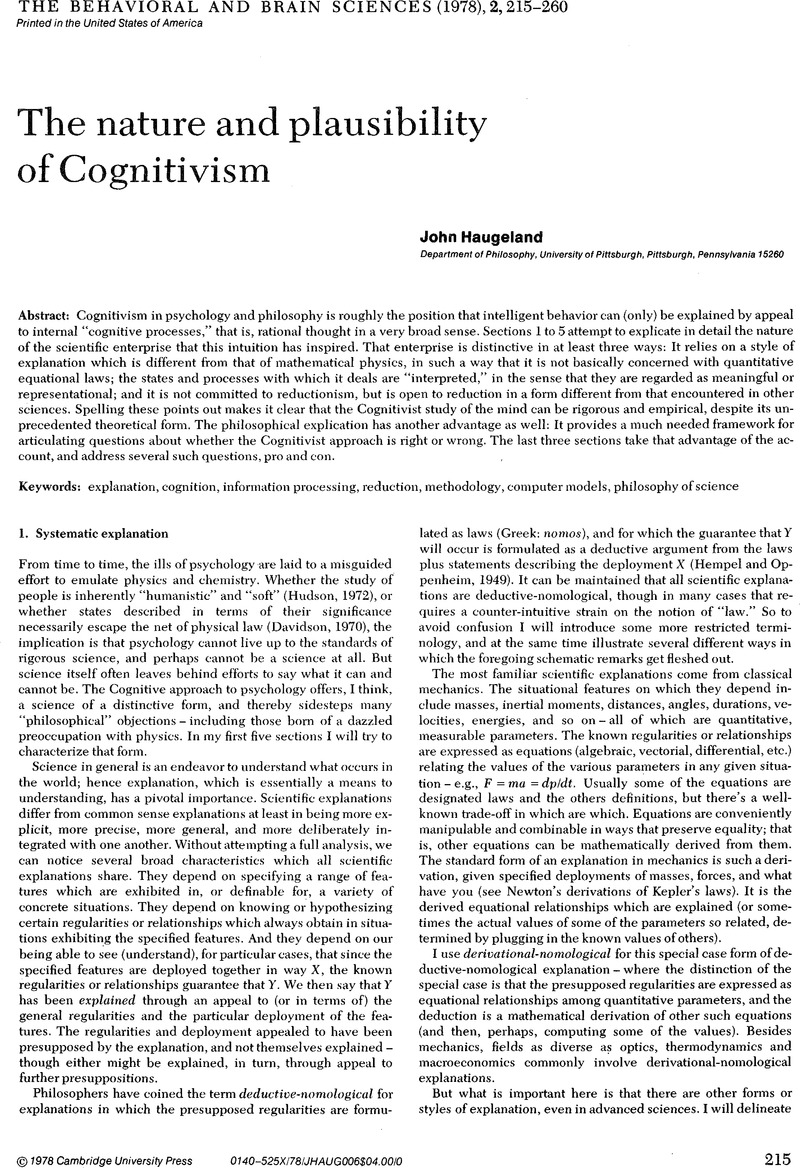No CrossRef data available.
Article contents
On explanation, holograms, moods, and skills
Published online by Cambridge University Press: 04 February 2010
Abstract
An abstract is not available for this content so a preview has been provided. Please use the Get access link above for information on how to access this content.

- Type
- Open Peer Commentary
- Information
- Copyright
- Copyright © Cambridge University Press 1978
References
REFERENCES
Beurle, R. L.Properties of amass of cells capable of regenerating pulses. Philosophical Transactions of the Royal Society B. 240:55–94. 1956.Google Scholar
van Heerden, P. J.Theory of optical information storage in solids. Applied Optics. 2:393–400. 1963.CrossRefGoogle Scholar
Overton, D. A. State-dependent or “dissociated” learning produced with pentobarbital. In: Milner, P. and Glickman, S. (eds.), Cognitive Processes and the Brain. Princeton, N.J.: D. Van Nostrand Company, Inc., 1965.Google Scholar
Penfield, W., and Perot, P.The brain's record of auditory and visual experience. Brain. 86:596–696. 1963.CrossRefGoogle ScholarPubMed
Penfield, W., and Roberts, L.Speech and Brain-Mechanisms. Princeton, N.J.: Princeton University Press, 1959.Google Scholar
Rieger, C., and Grinberg, M.The Causal Representation and Simulation of Physical Mechanisms. Technical Report TR-495, Department of Computer Science, The University of Maryland, College Park, 20742.Google Scholar


